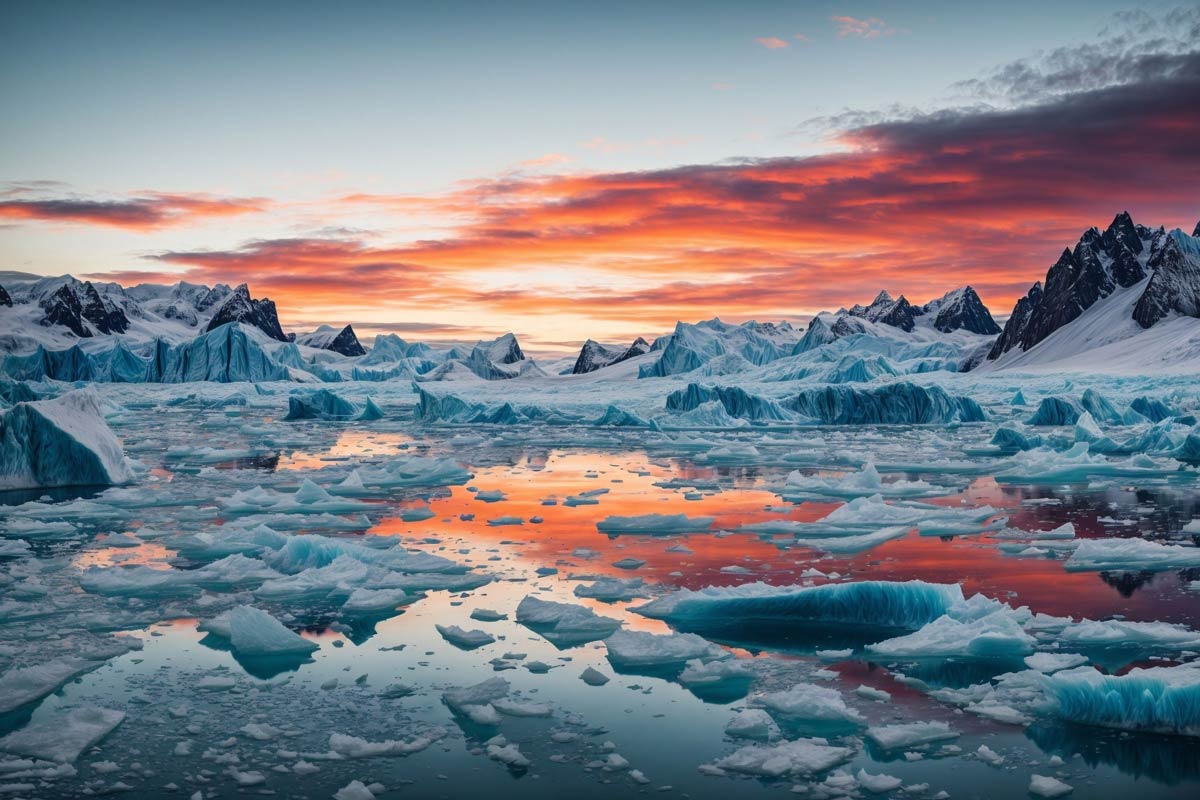#3 ‘Always carry out what I bring in’
The subject of waste in the context of the mountain environment is a significant, and sensitive, issue. As the United Nations Environment Programme (UNEP) explains: “Concentrated visitor activity in mountain areas generates significant amounts of both solid waste and wastewater, which can pollute water and soil through improper storage and disposal. Solid waste can build up from food and beverage consumption and the disposal of used packaging, supplies and equipment.”
The website Glacier Hub expands on the issue, confirming: “Dealing with tourists’ waste is always a problem; they usually have a lot of disposable goods and aren’t necessarily invested in the area they’re visiting. The problem doesn’t start and stop with trash, however. Where to put tourists’ natural waste is an important matter for local governments and planners. This issue becomes especially important in higher altitudes where organic material does not break down easily, or quickly, on account of the cold, low-oxygen environment that typifies higher elevations. On glaciers the issue is complicated further. Though burying human waste in soil is often the official leave-no-trace procedure, burying bodily waste in ice only preserves it – when the ice melts, it’s still there. As glaciers retreat, more and more human waste is becoming uncovered.”
“Human waste and litter are considerably visible impacts on mountains. Mountaineering is one key activity for many mountain visitors, and our contribution to this problem is gaining increasing attention within affected and concerned communities (for example the issue of human waste on Mount Aconcagua),” reports Dr Carolina Adler, of the UIAA Mountain Protection Commission (MPC). “As a key issue for sustainability, managing waste is a complex problem in society. Therefore, to find practical solutions that work, we need to learn from people’s own experiences and cultural contexts as well, alongside the technical aspects”.
The Commission believes there is an urgent need to engage with its own ‘community-of-practice’ in mountaineering, including federations and the mountaineers they represent, scientists, practitioners, authorities and local communities to assess the status quo and jointly design practical means to address this problem. “First, we plan to consult widely and account for real experiences to date, and listen to the concerns and perspectives within this ‘community-of-practice’ on the waste problem in mountaineering,” continues Dr Adler. “We need this input so that we may systematically learn about our state of knowledge and the real extent of the problem on the ground.”
A platform for finding solutions
The MPC, through the UIAA Mountain Protection Award (MPA) platform, is helping promote the work of projects dedicated to both raising awareness about the waste problem and providing proactive solutions.
For example, North India-based Waste Warriors is focused on creating a cleaner and healthier environment by putting proper waste management systems in place, conducting clean-ups, installing dustbins, and raising awareness amongst the community and tourists of the importance of nature conservation, maintaining cleanliness and proper disposal of garbage. One of the challenges Waste Warriors admits facing is not purely environmental but cultural and the social stigma attached to the role of waste workers. Ensuring they are respected, given proper equipment and carry out their work in a safe manner is one of the project’s core aims.
In the Himalayas, Eco Everest Expeditions of Asian Trekking Agency promotes an eco-friendly way to deal with the challenge of climbing Mount Everest by raising awareness about the consequences of human impact on this fragile environment. It involves the removal of trash from Everest where an expedition leader personally invites climbers at base camp to contribute and engage team members to spread the word. The cleaning programme has been given the catchy term ‘Cash for Trash’. Any climbers who have collected trash can return to the Eco Everest Expedition base camp, have their rubbish weighed on scale and are paid 100 rupees ($1) for each kilo of garbage. The garbage collected is then sorted out for recycling and repacked. The project involves people who are already on the mountain, therefore no extra expenses are incurred. This results in high efficiency at a relative inexpensive cost and engages the mountaineering community directly.
Tackling a different facet of the problem, Mountain Wilderness in Switzerland focuses its attention on the infrastructures in the Alps which have dilapidated due to a misuse, the absence of owners or an unclear legal status. Much of this infrastructure built in the latter half of the 20th century consists of solidified, impregnated wood, and metal. The centrepiece of Mountain Wilderness’s Switzerland project is the deconstruction of a decayed hut in commune of Safien. It encompasses all the steps to deconstructing the building: obtaining the permission to do so, inspecting the material used, organising their appropriate recycling or disposal, and – finally – the deconstruction. Afterwards, the local habitat is able to regenerate, where the spot once covered by the building will be restored to its natural state with long-term benefits for plants, animals (and mountaineers).
Returning to the Himalayas, the Mt. Everest Biogas Project is formed by a group of volunteer engineers from the Seattle area and led by professional Everest climbing guides Dan Mazur and Garry Porter. The project addresses the issue of sustainable waste management and disposal of human waste generated by the climbing community, specifically in the Sagarmatha National Park and the village of Gorak Shep, below the Mt. Everest base camp, an extreme environment and remote location.
“Getting rid of human waste is a worldwide issue and is being addressed somewhat by those who want to maintain our environment for generations to come,” explains Garry. “It is not a simple problem and there are no easy, cheap sustainable solutions.”
Waste clean up operation on Everest. Image: Ken Noguchi
Its proposed solution, provided by off-the-shelf low technology systems that are readily available in Nepal, will provide benefits to the people of the region in the form of a clean burning renewable energy source (methane gas), an odorless nutrient rich fertilizer, and local employment during both construction and operation.
What is unique about this project is that it will adapt existing biogas digester technology that has been successfully implemented throughout Nepal, China, India and other countries, albeit at lower elevations and warmer climates. To bring this technology to the extreme conditions of the upper Himalayas, this project will combine the basic design of a Nepalese biogas digester with a low technology, off the shelf heating design that will allow the system to operate in a colder environment.
The project aims at eliminating the annual dumping of 26,000 pounds (12,000 kilograms) of solid human waste in Gorak Shep. Additional environmental benefits of this project are reduced reliance on burning wood or yak dung for heating and the resultant respiratory and ocular health risks; reduced deforestation of the area’s limited wood resources; and a reduced risk of water contamination by fecal coli form.
The primary organizational and decision making group in Gorak Shep is a committee of 5-6 teahouse owners. Upon project completion, this committee will assume ownership and responsibility for the long-term operation of the biogas reactor. The teahouse owners are enthusiastic about the potential of eliminating this environmental nightmare that is impacting their local community and considered an insult to their sacred mountain.
If implemented successfully at Gorak Shep, hundreds of other locations may benefit from high altitude biogas digesters to improve the lives of local people and their environment by reducing pollution, deforestation, health risks and costs to obtain alternate fuel sources. “I am optimistic that the biogas system, if it is sustainable, will be replicated in other high altitude locations and will be improved as it is replicated,” closes Garry. “Dealing with human waste at high elevation is a global problem and the biogas system may be one of the long-term solutions. The design is open source with the intent that everyone has access to it.”
Leave No Trace
As part of its commitment not only to cleaning up mountain waste but preventing it becoming a problem in the first place, the UIAA integrated the longstanding Respect the Mountains campaign into its sphere of activities during the autumn of 2015.
The Respect the Mountains project, supported by KEEN, is governed by the 7 Ways to Respect the Mountains. One of these ways is ‘leave no trace’.
Throughout Europe during the summer of 2016, the UIAA will organize a series of clean-up initiatives. The series comprises nine events across eight countries aimed at encouraging the protection and preservation of a sustainable mountain environment for future generations. These events encourage local sport enthusiasts, mountain visitors, tourists and outdoor sport companies to actively participate and form their own ‘action community’.
The UIAA’s long-term strategy for Respect the Mountains is to develop year-round and worldwide educational events and mountain preservation projects with the support of its national member federations.
A global commitment to combating the mountain waste problem.



